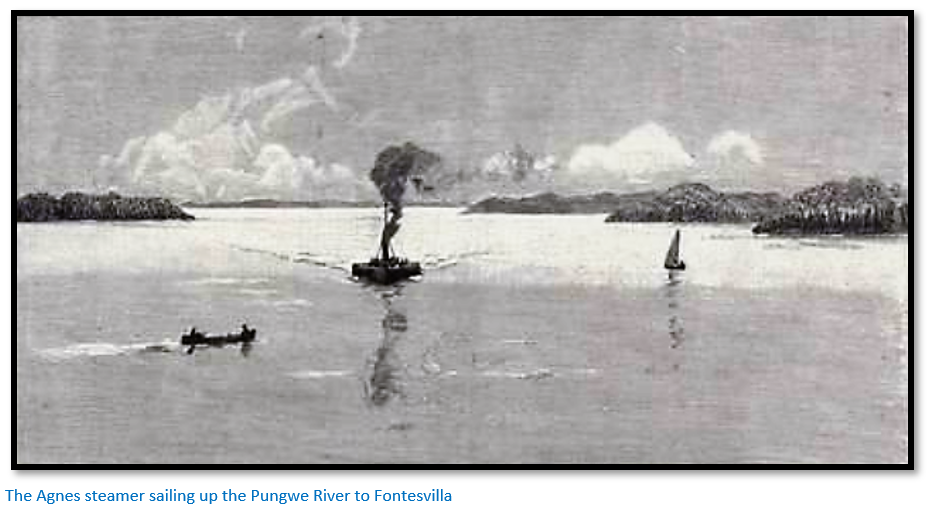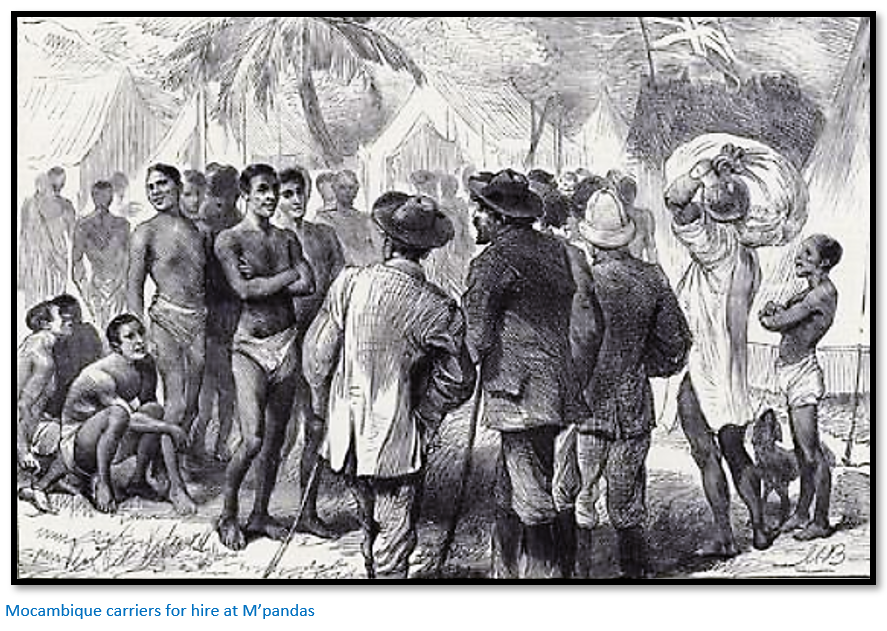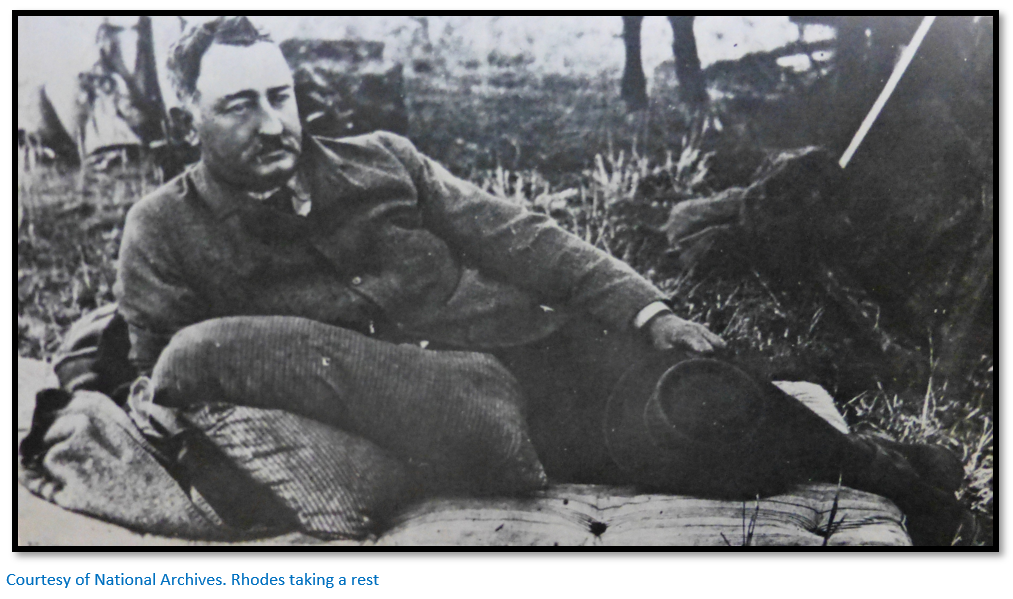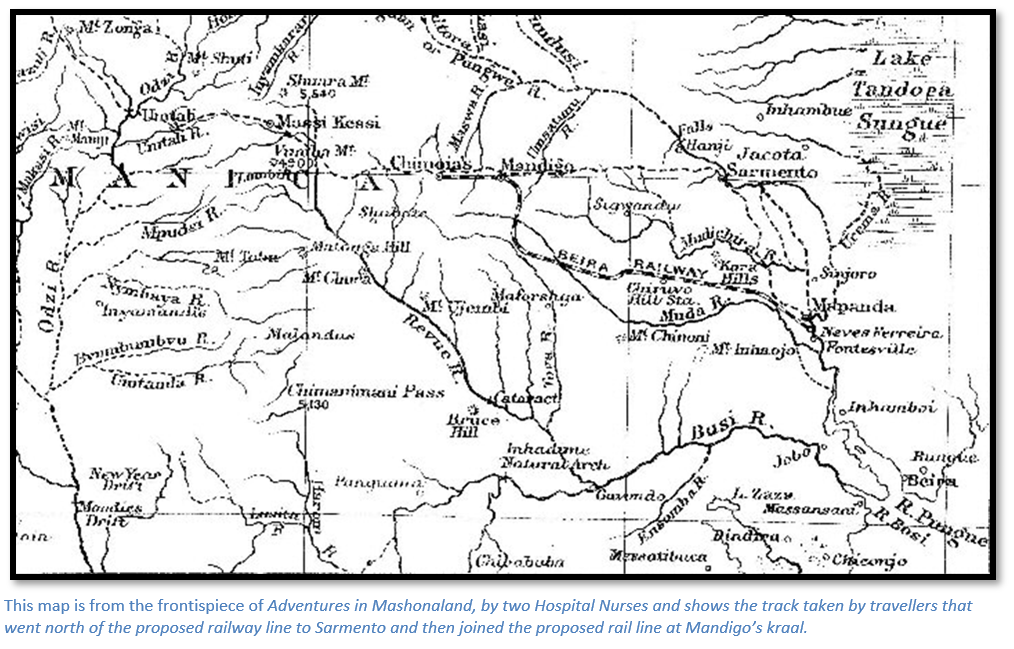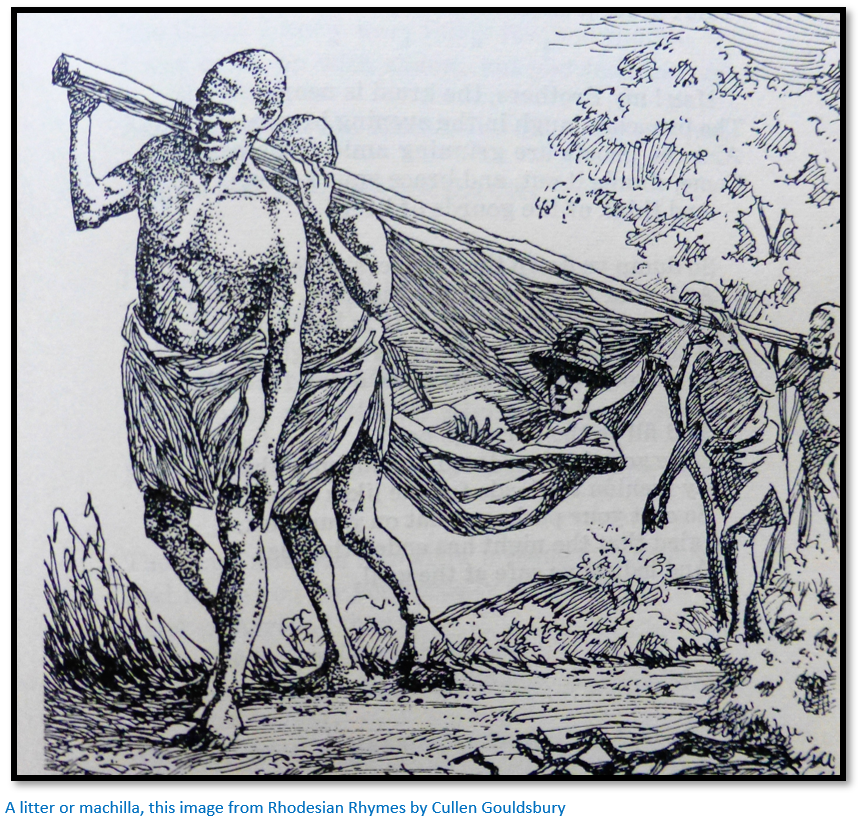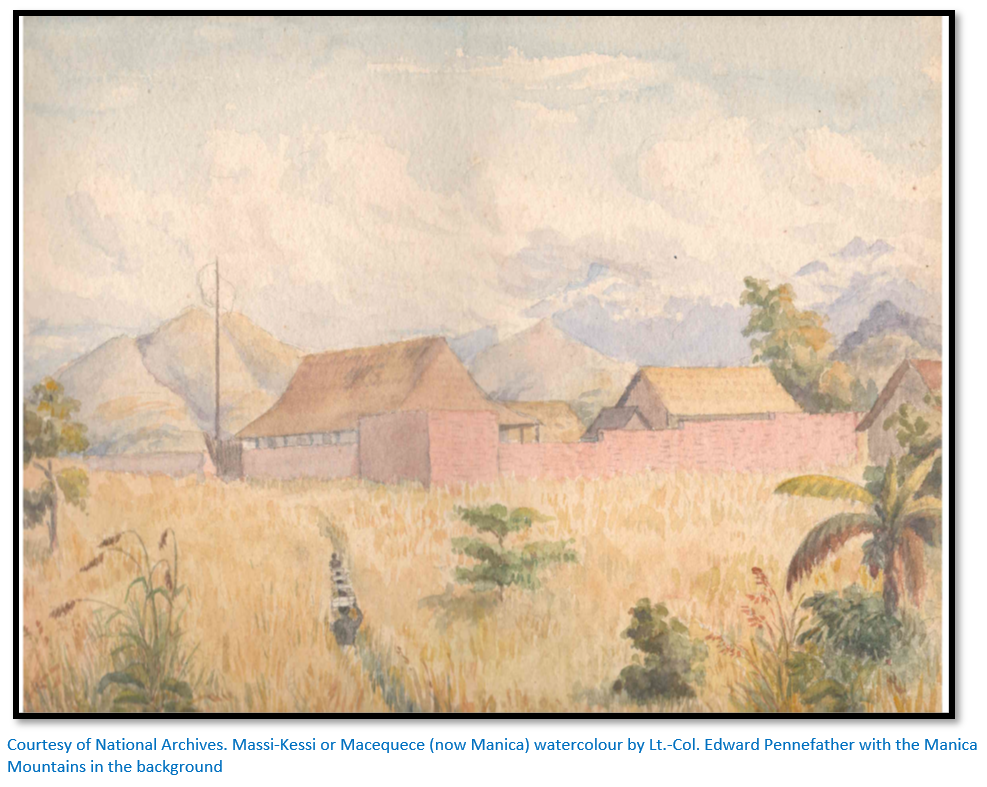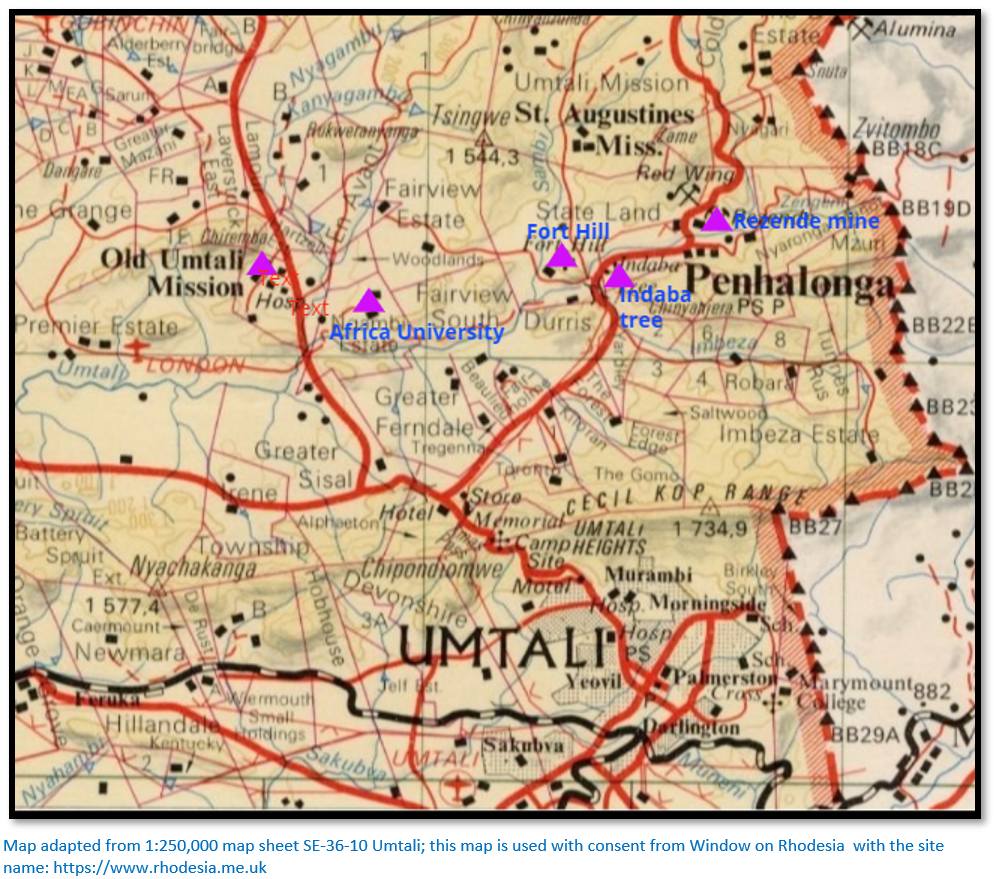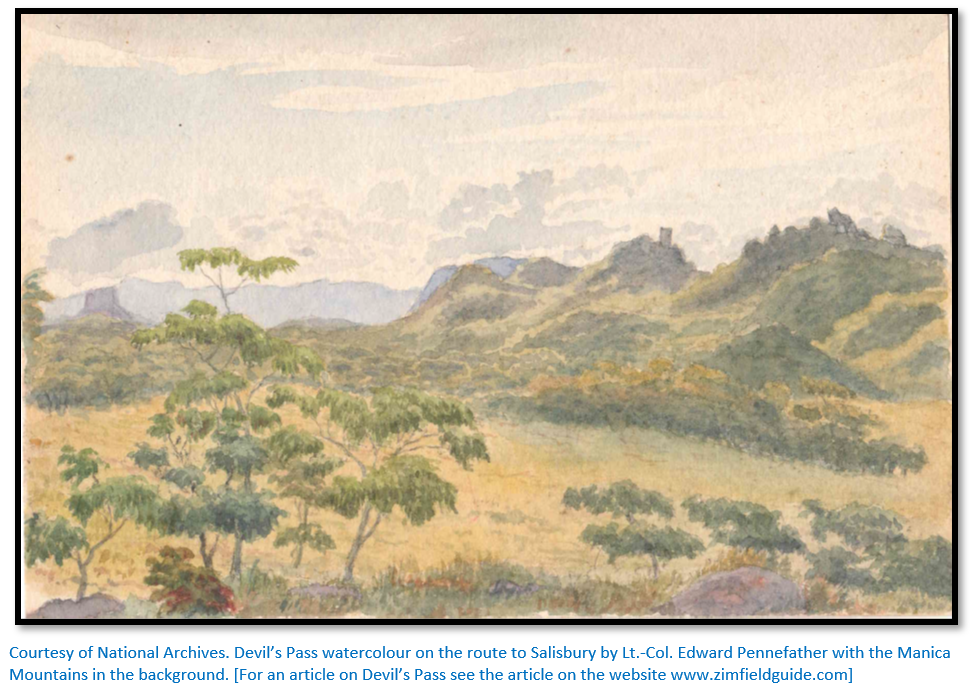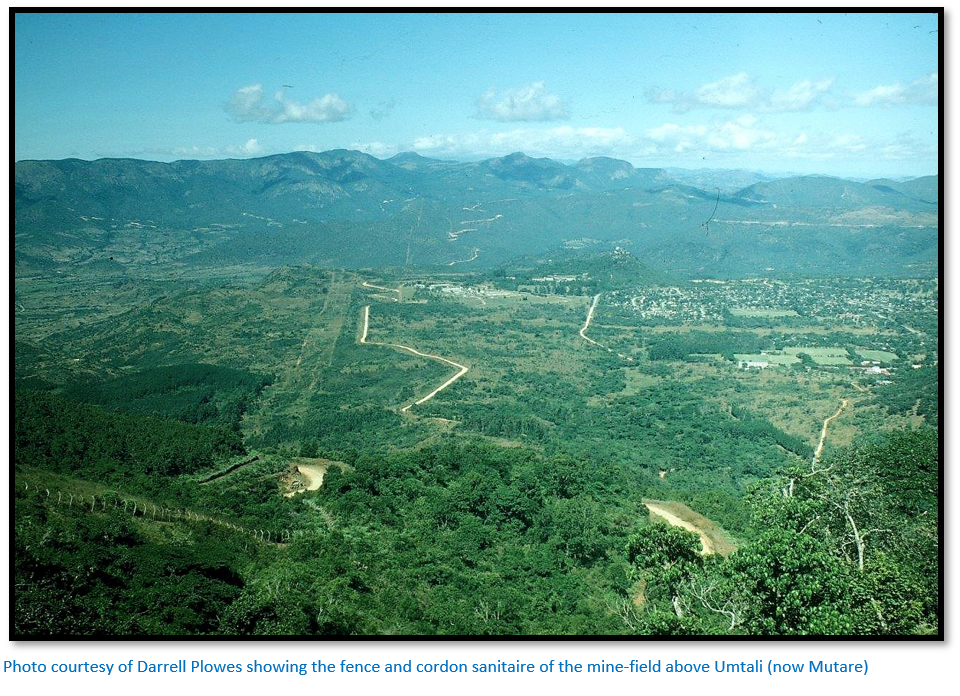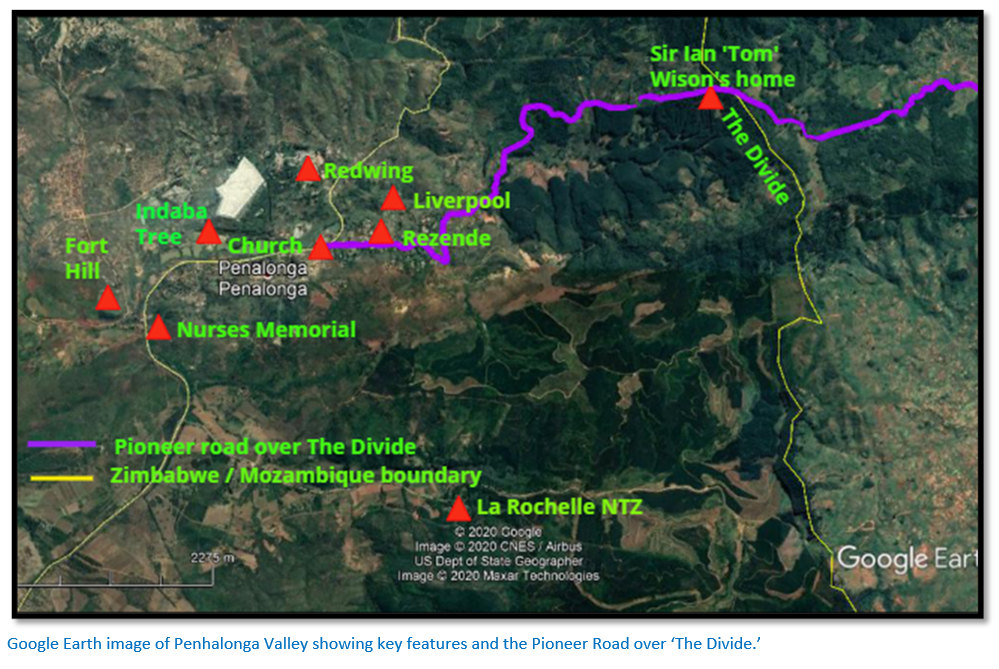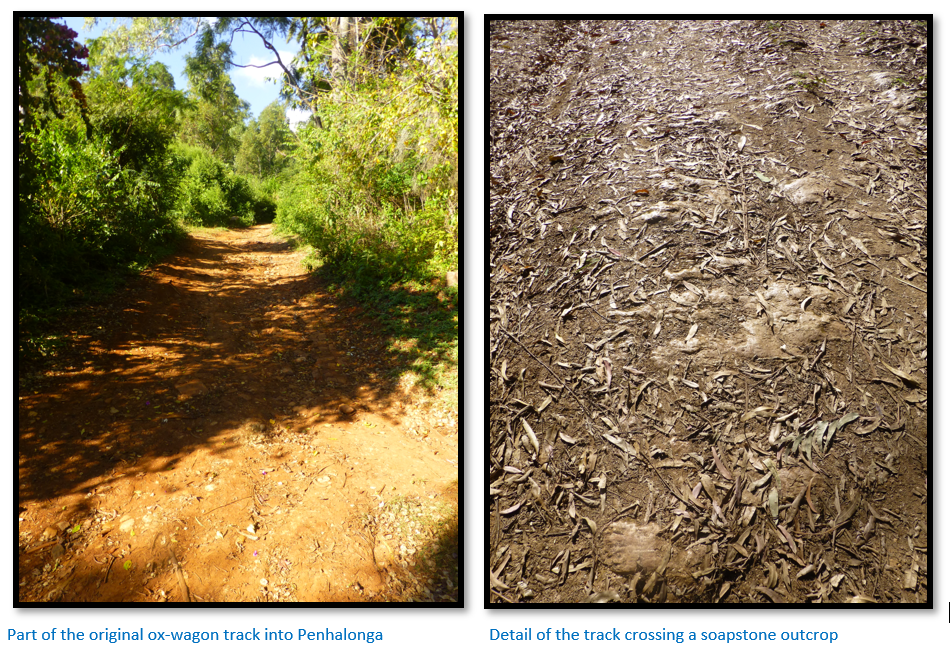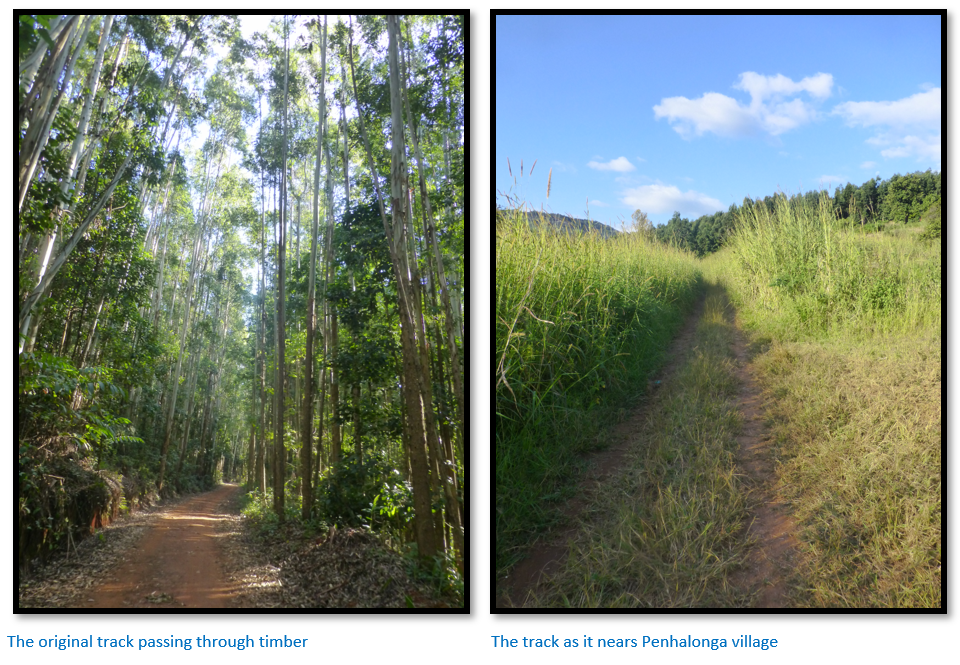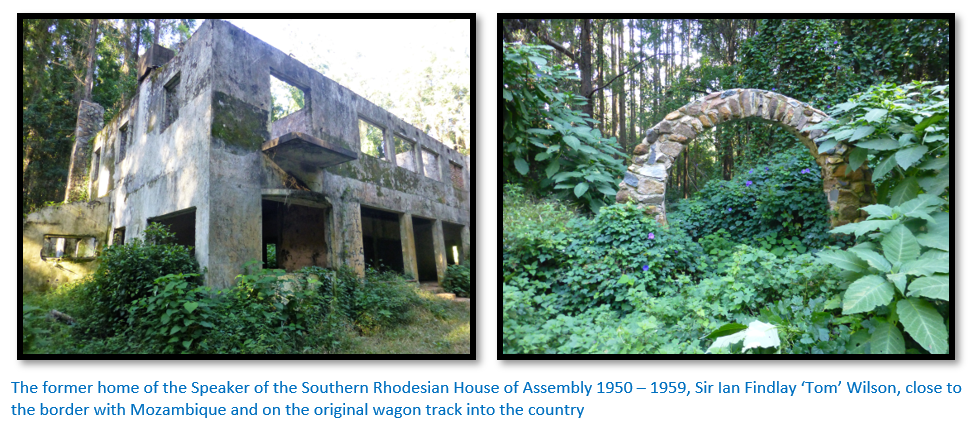Rhodes first journey into Mashonaland in 1891 through Penhalonga
Rhodes travelled through Penhalonga on his second trip to what would become Rhodesia (now Zimbabwe) The first was in October 1890 with Sir Henry Loch, then the Cape Governor and British High Commissioner, M.M. Venter and D.C. de Waal from Cape Town went by train as far as the railhead at Vryburg and then by horse cart. Loch turned back at Macloutsie in Bechuanaland (now Botswana) because he had warnings that Lobengula’s ‘young bloods’ desired war and would capture Rhodes if they had the opportunity. Despite Loch’s efforts to dissuade him Rhodes was determined to visit Mashonaland; and on 1 November 1890 the party reached Fort Tuli with its police force of about two hundred men; shops and boarding houses, smithies and a church. Here they met some Boer farmers from the Zoutpansberg who had hunted over many seasons in Mashonaland and were told by them that the Lundi (now the Runde) and Tokwe River would soon be in flood and impassable. On the basis of that information, the entire party turned around and returned to Cape Town via Pretoria, Johannesburg and Kimberley.
A year later, in September 1891, Rhodes, Major Frank Johnson and de Waal travelled up the east coast on the Norseman as far as Beira which they reached on 26 September. At the time Beira had fifty to sixty houses and some stores; almost all built of galvanised iron. Next day they travelled up the Pungwe River in the Agnes, a flat-bottomed steamer belonging to Frank Johnson. They passed numerous island on which the inhabitants had built their homes in the trees to escape the danger of the annual floods, the Agnes had to anchor for the night for fear of grounding on a sandbank and they heard the sounds of lion and hyenas from the river banks. Next morning the Agnes grounded and could not move, so while they waited for the rising tide to lift the Agnes off the sandbank, they rowed across to the river bank and went hunting and Frank Johnson shot two waterbuck. By mid-afternoon the rising tide set the Agnes afloat again to travel up to Fontesville – nearly one hundred kilometres from Beira and the Portuguese military post at Neves Ferreira. De Waal describes the soldiers as yellow with fever and as thin as dried fish.
When de Waal attempted to help Johnson land the horses from the boat to the shore, he was told: “Do you know, my friend, that too many cooks spoil the broth?” Hours later Johnson was still struggling and de Waal told Rhodes: “that Major Johnson understands as much about handling horses as a crow does about baking cakes!” Leaving Johnson to take the horses and cart, Rhodes and de Waal went by dinghy up the Pungwe River to M’pandas which they reached after dark. Here they spent the night at Cowhan store, plagued by rats and mosquitos and hired extra carriers. Rhodes bought another cart and after much trouble in spanning the horses they set off next morning with Rhodes, Johnson and de Waal in one cart, William and Tony (Rhodes’ cook) in another and their three ponies with pack-saddles. On that days’ journey they encountered waterbuck, zebra and hartebeest and camped the night on the bank of the Muda River; the three Europeans in a tent were disturbed most of the night by five or six lions near the camp that were kept away by the large fire kept alive all night by the carriers.
Next day after another struggle to inspan the horses they travelled on, de Waal shooting and wounding a buffalo which he refused to follow into the heavy undergrowth. Rhodes killed a zebra which supplied meat for all the party and soon after they reached the Mudichiri River which was an ordeal to cross with their two carts. The fine road Frank Johnson had promised to Mashonaland was an illusion…they had already broken a swingle-bar and cart pole!
They were still travelling at nightfall with hyenas cackling and then lions roaring and the convoy split up; Johnson in one cart ahead, Rhodes and de Waal following and the carriers in the rear far behind. They proceeded with loaded guns until they caught up with Johnson’s cart already outspanned for the night. Exhausted they soon fell asleep and even when Williams brought news of a lion in camp, none of the party could be aroused. At daybreak Rhodes got up and walked to the edge of the camp, before suddenly turning around and dashing back. When asked what the matter was, Rhodes replied: “A lion has been chasing me!” and told them he heard a roar and saw the lion before taking to his heels. Johnson and de Waal believed it was in fact a hyena and the episode gave them much amusement, not least was the sight of Rhodes with his pyjamas around his knees!
They started for Sarmento, a Portuguese outpost on the Pungwe, early in the morning and experienced great difficulty dragging the carts along the track and often having to unload the carts to negotiate the steep ascents and descents. At Sarmento, the Portuguese officials greeted them in a friendly manner and toasted them with wine from a large demi-john. In the afternoon after the pole on the second cart bought by Rhodes had broken for the third time in seventy kilometres, they abandoned it to the Sarmento officials; however they had no use for it as tsetse-fly had killed all their oxen and horses.
After Sarmento they encountered many steep ravines which necessitated unpacking the contents four or five times – an exhausting task in the humidity. It was now clear they were travelling not on a wagon road, but a mere footpath which was often in such poor condition that a horse could not be ridden, the rider must dismount and lead the horse. As they had their dinner that night, they decided to abandon their remaining cart. Early next morning an American missionary walked through their camp and asked if they had lost a horse laden with pots, pans and gridirons. They knew their horse had been following them accompanied by carriers and Rhodes said: “It can be no other horse than the one we have lost; what colour is it?” The missionary replied: “How can I tell you that when all that I saw of the poor creature was its feet and bones.” It had been killed and eaten by lions.
Their path was now through bamboo forest filled with fruit trees and bushes, the going torturous, often a horse’s load would slide down its back and hang underneath its belly so they had to halt and reload. The sun beat down and finally they found a stream, but the water made both Rhodes and de Waal feel ill. They had separated from Johnson and the carriers and were only united after an anxious wait after dark.
The following day they left the river and about midday came across the well-known cricketer, Monty Bowden, who was trudging along the same track with thirty carriers carrying supplies of flour, whisky and other provisions for his shop at Old Umtali trailing after him. Bowden himself was in very poor condition, weak and yellow with malaria. This was not the first time Bowden had travelled to and from Fontesville on foot. Having given up the idea of finding a rich gold mine, like many others he had taken to trading, and the only means of replenishing his stock was to go to Fontesville himself, returning with carriers loaded with whatever he could obtain, to sell in his store. It compelled a journey each time of hundreds of kilometres on foot in a land where there were no roads, and where the lions and leopards were on the prowl, and the low lying country was often swampy and infested with malaria.
The party clearly believed that whisky was a fever preventative and Rhodes presented Bowden with a bottle of whisky stating that "it might help him on his way!" but de Waal, evidently in charge of commissariat, was rather displeased as it was the last bottle: Rhodes replied: “We still have some old brandy still. Bowden complains of feeling poorly and fatigued, his colour testified to it, and it is only right that I should help him." They left in the afternoon and soon arrived at Mandigo’s kraal, another small Portuguese military outpost. The old Chief sold the party mealies, beans, flour, eggs, pumpkins, sweet potatoes and local beer.
The next day, Rhodes and Bowden met again, and De Waal received another surprise; “Bowden complained that his health was rapidly giving way, and that he felt very exhausted. Mr Rhodes deeply sympathised with the poor man, and I no less.” On this occasion, Rhodes gave Bowden the horse that de Waal was using. “Not to appear disagreeable,” said de Waal, “I did not utter a word, though it was with a feeling of deep regret that I witnessed my dear brown pony leave us, and the animal showed its disinclination to do so by repeatedly neighing as it was being led away. Mr. Rhodes now asked me whether I minded his giving my horse away. That,” I answered, “you should have asked me before you did it. But you would have had no objection?” It was through this generous offer that Bowden did reach Old Umtali.
Next year on a trip to Fort Salisbury in February 1892 Bowden was thrown from the post-cart in which he was travelling, a subsequent ‘Roll of Pioneers’ recording that he died as a result of being “crushed by a wagon near Umtali.” In fact, Bowden was playing cricket for Manicaland on the main street of Old Mutare and it was quite something to have the famous Surrey cricketer playing. In the second innings against the BSA Company Bowden took four wickets (all clean bowled). The effort involved in playing the match probably affected Bowden’s condition, although it was thought that he would feel better after some rest. Sadly, this was not the case. On the Monday, his condition deteriorated alarmingly, and he had an epileptic seizure and was taken to the hospital. The news spread quickly in the small town and there was great concern, but Monty Bowden died on Thursday, 19 February 1892. The District Surgeon, Dr JW Lichfield, a fellow Pioneer, signed his death notice, recording the cause of death as epilepsy. Subsequent sources have linked his death to the fall from the post-cart, exhaustion, alcohol and sunstroke.
[See the articles: ‘The Old Umtali Pioneer's Cemetery and the strange story of the death of Monty Bowden’ and the ‘Nurses Memorial’ and ‘Old Umtali – the second site’ all on the website Zimfieldguide.com]
Next day Rhodes’ party passed the Portuguese Governor who was in a litter with a single pole along the back of the chair carried by four men and followed by fifty others. They came across many abandoned ox-wagons on the track whose oxen had been killed by tsetse-fly, but gradually the country-side became more open and, in the afternoon, they reached Chimoio where they hired additional carriers having twenty-five in all with individual loads of 16 – 20 kgs (35 – 45 lbs)
Continuing their journey, Johnson shot a wild ox and the animal was quickly skinned and cut into pieces; that night camped near a river and bathed under a waterfall, enjoying a smoke and chat after dinner; no longer plagued by lions and hyenas. The countryside was now hilly, more open with tall grass higher than the horses, they counted twelve abandoned ox-wagons on this stretch of track. At noon they reached Massi-Kessi or Macequece, (now Manica) the headquarters of the Portuguese in Manica. Joaquim Carlos Paiva de Andrada had obtained permission to extract and sell minerals and created the Mocambique Company in December 1888 which constructed a fort in Massi Kessi for its headquarters.
They unsaddled their horses at a shop belonging to a Portuguese Jew who brought them a demi-john of wine and soon discovered they were next to the Chua Hills where forty-eight of the BSA Police had driven off a Portuguese force of four hundred and eighty soldiers and captured the fort. Prior to the Manica Treaty which was signed on 11 June 1891 the Portuguese influence had extended as far as the Mazoe River, but now the Manica Mountains formed the boundary between the Portuguese and Mashonaland. The party left in the afternoon and were astonished to see the extent of the alluvial gold workings on this side of the mountains in whose shadow they now made camp for the night. Next morning they started their ascent, noting numerous pits where the soil had been dug out to be panned for gold in the river below.
On the actual boundary, now known as the Divide, there was for many years a plaque indicating where Rhodes had entered Mashonaland.
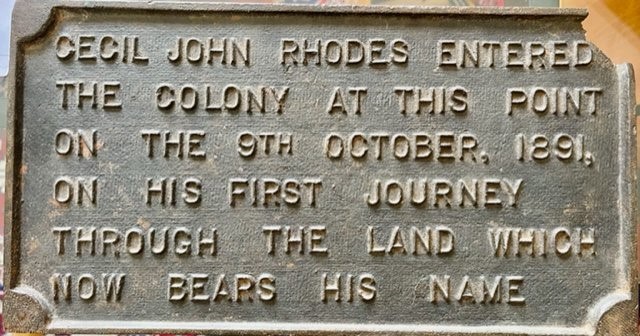
On this steep mountain-side to an altitude of about … feet, he stood, overlooking a lush valley where the Sambi and Imbeza river converged with the Umtali River and saw in the distance the initial workings of the Penhalonga and Rezende gold mines. At the end of the valley, was the hill on which Fort Hill had been built by the BSA Police, and in the far distance the first buildings at Old Umtali.
At Old Umtali (now the Methodist Mission) they were joined by Maurice Heany and Dr Jameson and would sleep that night in comfortable huts with good food and drink, a huge contrast to the discomfort of their previous camps when they had been plagued by the sound of hyenas and lions. Already about three hundred miners and prospectors were staying in the district and next day the party visited several of the gold-reef claims. That evening they gathered their carriers to pay them and asked if any were willing to stay on and work with Maurice Heany. All but two decided to stay on at Old Umtali; Pikenin and Matokwa elected to stay with the party. Next day they set off by wagon and cart for Salisbury; but that’s another story.
In 2016 I travelled up to the mine-field which ran in parallel with the Mozambique / Zimbabwe boundary on the original track down which the 1890’s ox-wagons and new settlers to this country came into this country.
My guide, Gary Goss, who lived locally in Penhalonga, told me that before the bulldozers drove up to demolish the mine-fields, the original ruts cut by the hundreds of ox-wagons wheels were visible in the soapstone outcrops that cut across the track. I would dearly have loved to walk from Manica in Mozambique over the divide and down to Penhalonga village in Zimbabwe…that maybe possible in the future!
The Google Earth image below shows the track over the ‘Divide’ from Mozambique into Zimbabwe taken by all the early travellers as a purple line.
Acknowledgements
Thanks to Gary Goss for guiding me around Penhalonga
D.C. de Waal. With Rhodes in Mashonaland. Books of Rhodesia, Bulawayo 1974

